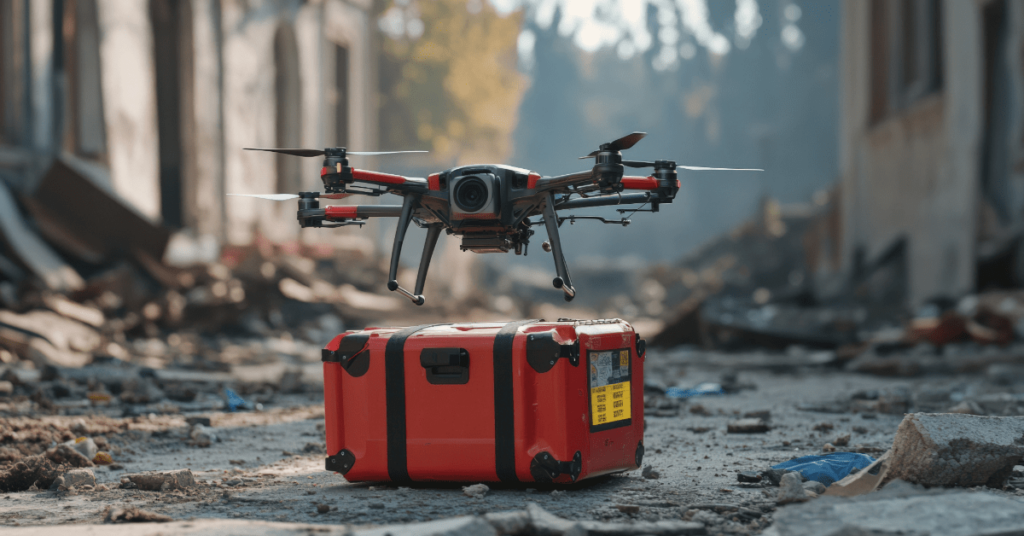The Sky’s New Frontier: Drone Expansion in Post and Parcel Logistics
The post and parcel industry is undergoing a profound transformation. Drone technology is emerging not just as an innovation but as a core component of future logistics networks. This aerial expansion, moving from trials to commercial operations, will reshape delivery methods, enhancing speed, broadening reach, and boosting environmental sustainability across the supply chain. Drone integration is set to redefine logistical efficiency, offering dynamic solutions to the complex demands of modern e-commerce and essential services.
Pioneering Aerial Networks Across Europe and Beyond
Leading postal and logistics operators worldwide are actively integrating drones into their delivery systems, demonstrating practical applications and paving the way for wider adoption. In the United Kingdom, Royal Mail, in collaboration with Skyports Drone Services, has significantly expanded its drone delivery network, with drones that carry payloads up to 6 kg (13.2 lbs). Establishing regular routes connecting the Scottish mainland with the Orkney Islands and serving the Isles of Scilly, these initiatives highlight the technology’s capacity to overcome geographical isolation. Drones ensure consistent postal and medical supply deliveries, even when traditional transport methods are challenged by adverse weather or terrain, proving invaluable for enhancing connectivity in remote communities.
Continental Europe shows similar advancements. La Poste in France, through its subsidiary DPD France, has operated commercial drone delivery lines since 2016. A notable route reduces a 30-minute van journey in mountainous Isère to an eight-minute drone flight, delivering to secure terminals in remote villages, commercial routes in these regions can carry up to 10 kg (22 lbs). This system integrates drones directly with ground operations, showcasing a scalable model for hard-to-access areas. Similarly, Correos in Spain, collaborating with Telefónica, is exploring 5G-connected drone deliveries in urban environments, testing real-time traffic coordination and precise delivery to mobile collection points. Beyond last-mile solutions, DHL’s partnership with Bulgarian cargo drone developer Dronamics to explore large-scale, middle-mile cargo drone deliveries across Europe points to a future where cargo drones optimise the flow of goods between distribution centres, supplementing existing air and road networks. Dronamics “Black Swan” cargo drone boasts one of the largest loads designed to carry a substantial payload of 350 kg (770 lbs). Parallel to these European efforts, Walmart’s collaboration with Wing in the Dallas-Fort Worth area signifies the mass-market viability of drone delivery in densely populated consumer markets, indicating a global shift toward aerial logistics.
Unlocking Unprecedented Operational Efficiencies
The compelling advantages driving this drone expansion are multifaceted. Expedited delivery is a primary driver; drones bypass traditional logistical bottlenecks like traffic congestion and geographical barriers, facilitating significantly faster delivery times. This speed is critical for time-sensitive goods, emergency medical supplies, and the escalating demands of e-commerce. Furthermore, enhanced accessibility is paramount for remote or otherwise hard-to-reach locations. Drones offer an efficient and reliable delivery channel, overcoming infrastructure limitations and ensuring consistent service where conventional methods are impractical or costly.
From an environmental perspective, electric drones provide a more sustainable alternative to fossil fuel-powered vehicles. Their operation contributes to reduced carbon emissions and localised air pollution, aligning with global environmental objectives and corporate sustainability mandates. Operationally, the automation of delivery processes through drones can lead to optimised routes, reduced fuel consumption, and potentially a reallocation of human labour to more complex tasks. While initial investments can be substantial, the long-term potential for reduced operational costs and improved service quality makes the economic case for drone integration increasingly compelling.
Regulatory, Technological, and Societal Hurdles
Despite the clear benefits and rapid advancements, widespread drone adoption faces significant hurdles requiring effort from both industry and regulators. Complex regulatory frameworks are a primary challenge. Airspace integration, especially for Beyond Visual Line of Sight (BVLOS) flights crucial for long-distance deliveries, necessitates stringent safety protocols and compliance with evolving regulations, such as those from the European Union Aviation Safety Agency (EASA). Navigating these rules demands substantial investment in technology, training, and operational certifications.
Technological limitations also persist. Current drone capabilities in payload capacity, battery life, and consistent operation in adverse weather conditions require continuous innovation. Scaling operations to handle diverse package sizes, ensuring precise landing in varied environments, and secure cargo handling without human intervention are areas of ongoing development. Beyond technical aspects, social acceptance and privacy concerns are critical. Public perception regarding noise pollution, visual intrusion, and camera privacy demands transparent operations, community engagement, and clear guidelines to foster trust and beyond. Finally, infrastructure development is a considerable undertaking. Large-scale drone operations will require new ground infrastructure, including charging stations, automated sorting facilities, and dedicated landing pads, particularly in urban areas. Such development requires substantial capital investment and strategic urban planning.
What’s next?
The global drone package delivery market is projected for substantial growth, reflecting confidence in overcoming these challenges. The collaborative efforts among postal services, logistics giants, and technology developers indicate a collective drive toward integrating drones as a foundational element of future delivery networks. As regulatory bodies adapt and technology advances, drone delivery is poised to transition from a novel concept to a standard, indispensable aspect of the post and parcel industry. This evolution will not only transform how goods reach consumers but also redefine the very contours of modern logistics, with the sky truly becoming the next frontier for delivery excellence.





